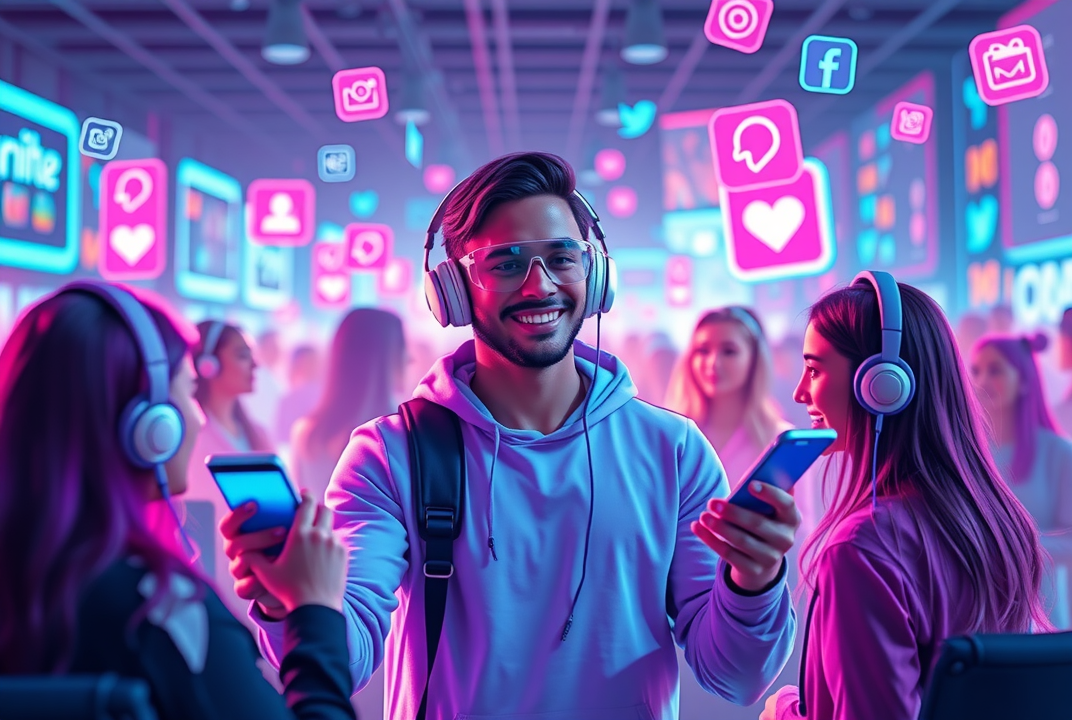AI in Entertainment: How Virtual Influencers are Changing the Game

Introduction Influencing has taken a new turn with the advent of virtual personalities. With artificial intelligence (AI) shaping various industries, the entertainment field is also witnessing significant changes. Virtual influencers, computer-generated characters acting just like humans on social media platforms, are a testament to this dynamic shift.
Imagine scrolling through your social feed and engaging with a person who isn’t real but influences millions with opinions, lifestyle tips, and product endorsements. In this article, we'll explore the emergence of virtual influencers, their growing presence, and why this innovation is attracting both attention and investment from the entertainment sector.
What Are Virtual Influencers? Virtual influencers are digital personalities created through AI and graphic design, intended to engage audiences similarly to human influencers. These virtual beings have lifelike appearances, showcasing distinct personalities, fashion styles, and social media presences. Unlike human influencers, virtual influencers' activities can be fully controlled and strategically planned by creators.
A virtual influencer can post consistent content without fatigue, scandals, or age impacting its influence. For brands and companies, they represent reliability and predictability in marketing campaigns.
The Technology Behind Virtual Influencers Creating a virtual influencer involves significant AI technology and exceptional graphic design. Various software tools facilitate the modeling of these characters, endowing them with human-like animations and speech patterns. Graphic designers work meticulously to mimic human expressions and movements.
AI adds another layer by analyzing social trends, enabling virtual influencers to interact intelligently with audiences. Machine learning algorithms give these digital personas the ability to understand user interests and comments, tailoring personalized interactions.
Popularity and Impact on Social Media The rise of virtual influencers is observable across platforms like Instagram and TikTok, where they gather followers and endorse products just like human counterparts. What differentiates them is their curated ability to consistently engage specific demographics with precise messaging.
For instance, virtual influencers can cover diverse topics, adapting dynamically to changing trends without constraints like physical exhaustion or mood swings. This feature positions them as preferable spokespeople for brands aiming for sustained engagement.
Statistics from recent reports show that engagement rates for virtual influencers often match or exceed those of human influencers, proving their effectiveness in content delivery.
Advantages of Virtual Influencers Several advantages make virtual influencers appealing to industries:
-
Control and Consistency: Brands exercise greater control over a virtual influencer's behavior, aligning content precisely with campaign objectives. This control eliminates risks of unexpected behavior that might not align with brand values.
-
Cost Efficiency: Without the need for travel schedules, makeup artists, or other logistics involved with human influencers, virtual entities can slash costs significantly.
-
Limitless Ability: With technology supporting them, virtual influencers can interact in numerous languages, adapt swiftly to technological advancements, and transcend geographical barriers seamlessly.
These benefits contribute to virtual influencers becoming powerful assets for marketing strategies, offering brands new avenues for connection and engagement.
Challenges and Ethical Considerations Despite benefits, virtual influencers bring challenges, notably ethical questions about authenticity and trust. It's pertinent for audiences to understand when they are interacting with a digital character versus a real person. Transparency can help maintain trust as part of ethical marketing practices.
Brands must also be cautious of digital manipulation issues and ensure that influencer content does not perpetuate unrealistic expectations or stereotypes among consumers. Clear guidelines around content creation for virtual influencers will likely emerge as the technology advances.
The Future of Virtual Influencers in Entertainment Looking ahead, the entertainment industry will likely see a broader implementation of virtual influencers. As technology advances, these figures will evolve with more sophisticated interactions and potentially integrate with augmented reality experiences.
Opportunities exist for virtual influencers in film, gaming, and beyond. Future collaborations might include crossover appearances in TV shows or movies, leveraging these AI-powered entities' appeal in new creative dimensions. Augmented reality could further enhance virtual influencer interactions in real-world scenarios.
The continued investment and interest in virtual influencers signal that this innovation is not a fleeting trend but a transformative element of modern entertainment.
Conclusion As virtual influencers continue to reshape the media landscape, businesses, creators, and audiences must adapt to this technological frontier swiftly. By embracing the advantages while addressing potential challenges, the entertainment industry is poised to explore new horizons.
For marketers and brands, integrating virtual influencers offers strategic advantages in engaging today's digital-savvy audiences. Observing this trend’s development will be crucial for anyone invested in the future of entertainment, AI, and social media marketing.